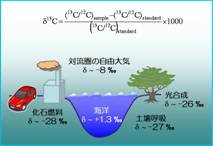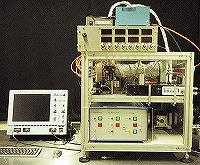Welcome to Tonokura Laboratory website.
The Tonokura laboratory conducts research in the field of atmospheric chemistry.
What we do in the laboratory:
・We use spectroscopy to try to understand the possible reaction mechanisms that chemical species undergo in the atmosphere.
・We develop and employ physical as well as chemical techniques to measure the quality of air.
The laboratory is currently looking for postgraduate researchers.
For more information, please click here.
Research
The Dynamics of the Atmosphere - Atmospheric Chemistry


Air quality issues are the result of interplay between the following factors: chemical reaction, temperature and mass transport. In order to reduce negative environmental impact, we need to identify as well as understand the reaction mechanisms that occur in the atmosphere and recognize the effect of these mechanisms on the environment as a whole. The research the laboratory performs is based on the belief that new interpretations of homogeneous reactions occurring in the troposphere and stratosphere are important in the development of counter measures against global warming. Thus, the laboratory employs several methods to conduct atmospheric chemistry research (the study of atmospheric chemical reactions) and to perform high sensitivity measurement of atmospheric trace species. These methods include: Techniques that possess effective optical paths in the range of tens of kilometers such as CRDS (cavity ring-down spectroscopy) and FMS (frequency modulation spectroscopy). High sensitivity laser spectroscopy.
The Development of a Portable Trace Gases Analyser


Environmental threats are various; acid rain, environmental hormones and dioxins are just part of the environmental phenomena that make up urban pollution. Where urban pollution is concerned, research on these threats as well as the diffusion of pollutants from their source and the composition of these pollutants (particularly substances listed in the Clean Air Act) are important. Bearing in mind the importance of this research, the laboratory is in the midst of developing a vacuum ultraviolet (VUV) laser ionization time-of-flight mass spectrometer that will be capable of high sensitivity field measurements (capable of measuring concentrations of up to ppt level). The spectrometer is expected to be able to detect atmospheric trace gases and identify components of urban pollutants.
Research on Photochemical Smog and Aerosols
The challenge to maintain urban air quality is beset by many problems including photochemical smog and aerosols. The laboratory is currently developing a measurement technology that utilizes supercritical fluid, enabling this technology to perform compositional analysis of aerosols.
